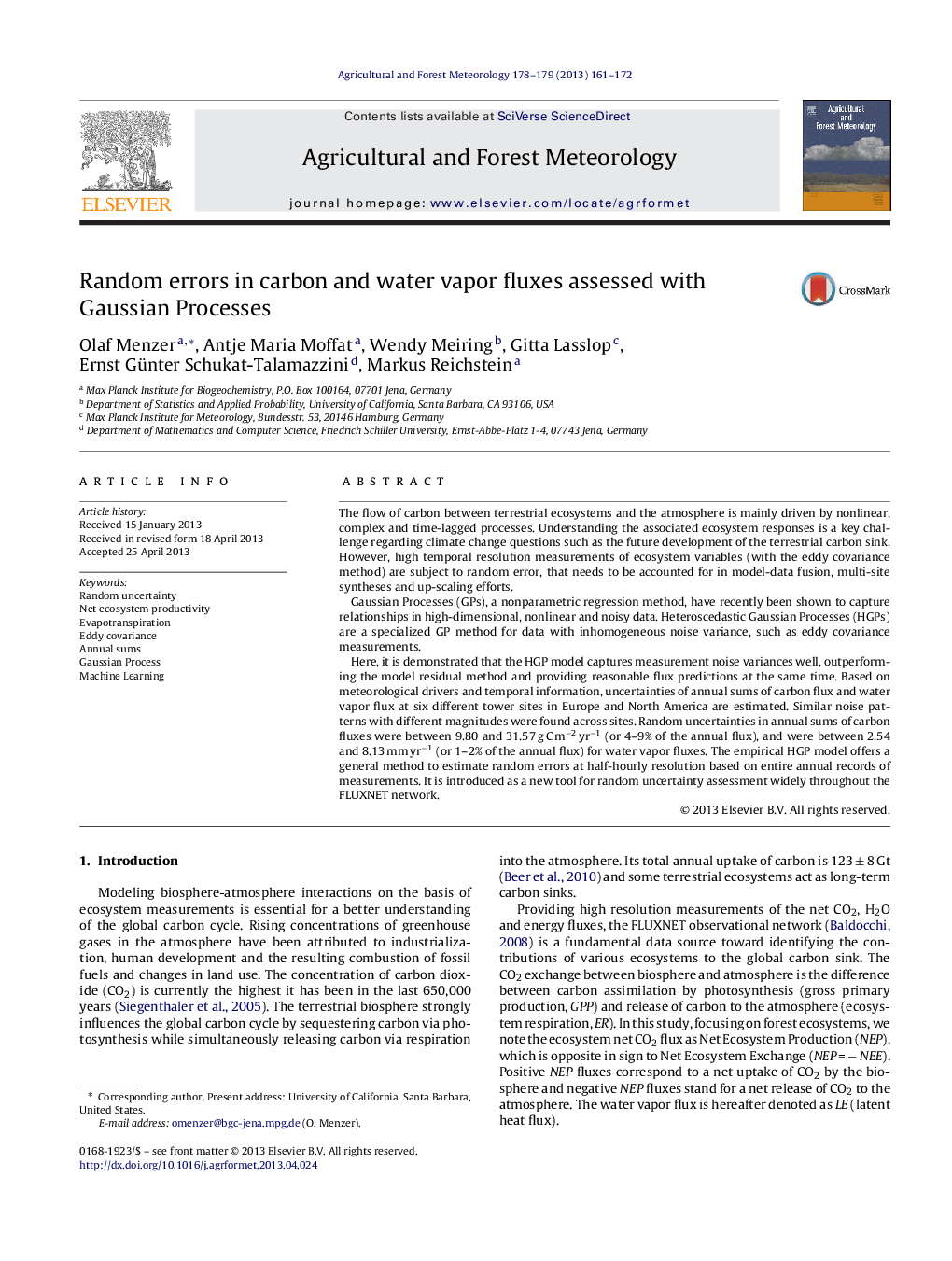| Article ID | Journal | Published Year | Pages | File Type |
|---|---|---|---|---|
| 6537869 | Agricultural and Forest Meteorology | 2013 | 12 Pages |
Abstract
Here, it is demonstrated that the HGP model captures measurement noise variances well, outperforming the model residual method and providing reasonable flux predictions at the same time. Based on meteorological drivers and temporal information, uncertainties of annual sums of carbon flux and water vapor flux at six different tower sites in Europe and North America are estimated. Similar noise patterns with different magnitudes were found across sites. Random uncertainties in annual sums of carbon fluxes were between 9.80 and 31.57 g C mâ2 yrâ1 (or 4-9% of the annual flux), and were between 2.54 and 8.13 mm yrâ1 (or 1-2% of the annual flux) for water vapor fluxes. The empirical HGP model offers a general method to estimate random errors at half-hourly resolution based on entire annual records of measurements. It is introduced as a new tool for random uncertainty assessment widely throughout the FLUXNET network.
Keywords
Related Topics
Physical Sciences and Engineering
Earth and Planetary Sciences
Atmospheric Science
Authors
Olaf Menzer, Antje Maria Moffat, Wendy Meiring, Gitta Lasslop, Ernst Günter Schukat-Talamazzini, Markus Reichstein,
